Catalog
Search
60 products
View:
- Selected: 0Areas of use
- Selected: 0Item names
- Selected: 0Manufacturer
- Selected: 1Made in
- Selected: 0Additional
View:
60 products
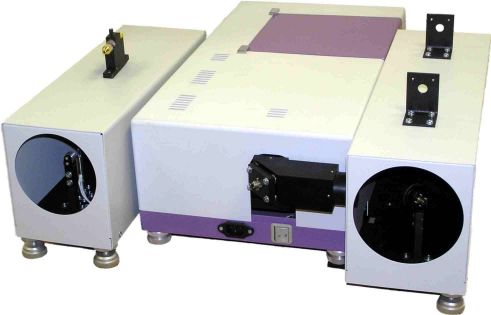
System for remote monitoring of the atmosphere
• Consists of a mirror telescope coupled with a Fourier spectrometer and a searchlight with an IR emitter
• Used to register the spectra of gas and aerosol-gas mixtures on routes up to 100 meters long
• The diameter of the main mirror of the telescope is 170 mm
• Angular field of view +/- 3 degrees.
• An additional reflector can be included in the kit
SIMEKS
Novosibirsk
Produced in: Novosibirsk
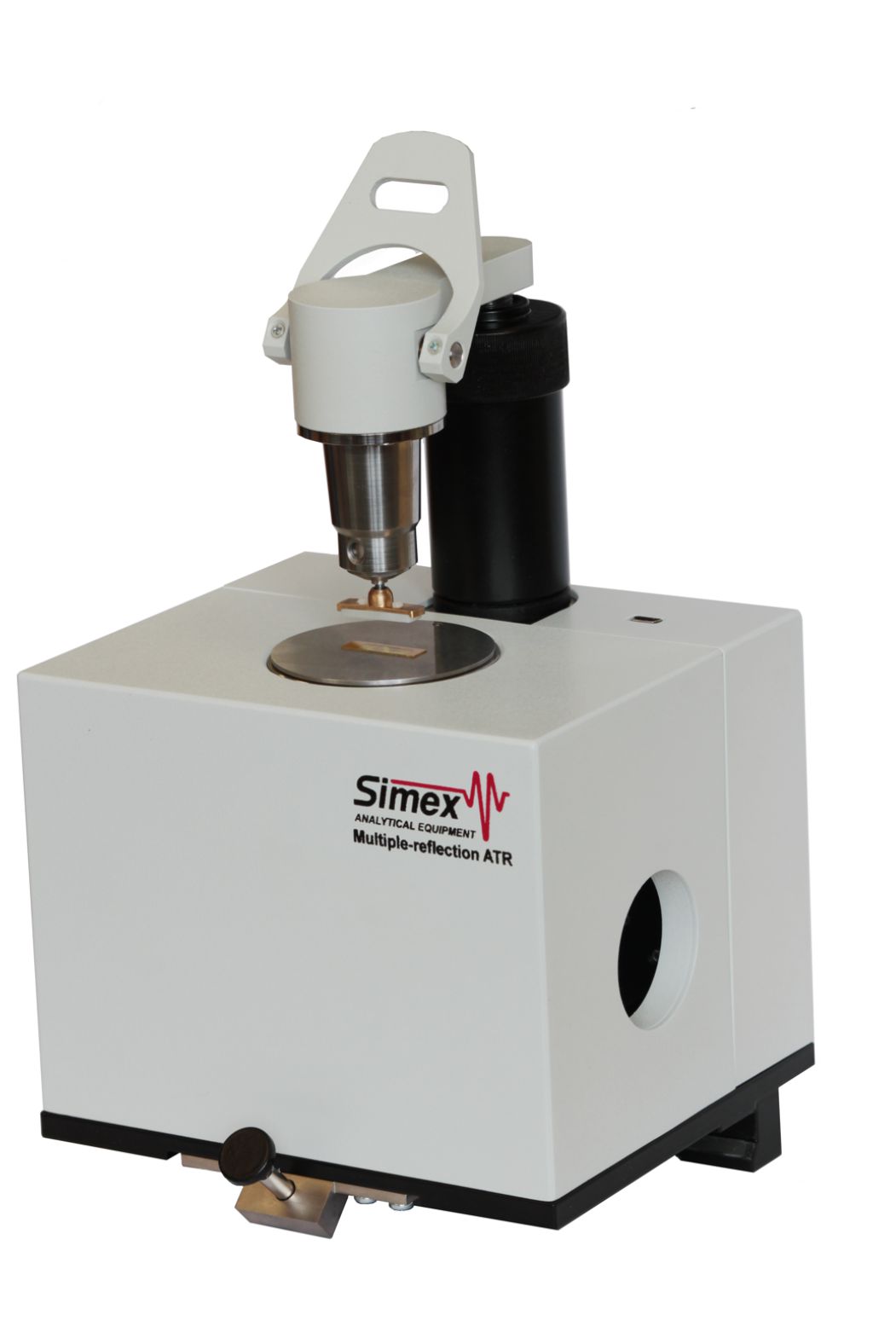
MNPVO prefix with a zinc selenide element and an integrated visualization system on an external monitor
The main difference between this set-top box and the universal set-top box of the NPVO and ZDO is that a prism is used as a working element of the MNPVO, which allows to obtain several reflections from the area of contact with the sample under study, which leads to an improvement in the quality of the spectrum and an increase in the sensitivity of the method (absorption bands become more pronounced). The registration of specular and diffuse reflection spectra (ZDO) is not provided on this set-top box.
The MNPVO prefix is effective in registering the absorption spectra of samples whose dimensions (number) are sufficient to ensure contact with the entire area of the working face of the prism:
* liquids of any degree of viscosity (solutions, suspensions, oils, etc.);
* solid elastic samples (polymer fragments of sufficiently large size, rubbers, plastics, etc.);
* powdered samples in quantities sufficient to be applied to the entire surface and samples in the form of thin tapes;
The universal clamp is equipped with a precision lever mechanism for quickly lowering the tip and a micrometer screw that allows you to pre–set the optimal degree of pressure - this ensures quick sample change and repeatability of the results during measurements. For convenience when working with liquid and paste-like samples, it is possible to rotate the clamping console by 180o.
Note: the MNPVO prefix does not exclude the possibility of registering the spectra of samples whose dimensions are smaller than the area of the working face of the prism (the presence of a visual inspection system of the surface under study increases convenience when working with small-sized objects), but the overall effectiveness of the method is significantly lower than when using the universal NPVO and ZDO prefix.
Transmission in the operating range of the spectrum, % of the input signal of at least 25
· The recommended number of scans when registering spectra is 25
· Spectrum registration time at 25 scans (resolution 4 cm-1), 30 seconds
· The depth of penetration of radiation into the sample, microns 5 – 15
· Minimum area of a solid sample, mm2 1
· Minimum volume of the test liquid, ml 0.3
· The permissible pH range of the analyzed objects is from 5 to 9
· Crystal substrate material ZnSe CVD, Ge
· Diameter of the focus spot, mm 3
· Number of reflections 3
· The size of the working face of the prism, mm 21 X 6
· Magnification of the 4X micro lens
· Total magnification of the visual channel 75X
· Field of view of the optical system, mm 2 X 2.5
· Digital video camera resolution 640 X 480
· Overall dimensions, mm 145×125×240
· Weight, kg 2
SIMEKS
Novosibirsk
Produced in: Novosibirsk

PRIZ - a reflection prefix with the lower position of the sample and visualization of the object under study on the monitor
The main advantage of the PRIZ prefix is the possibility of obtaining well–defined spectra of micro-objects after giving them the shape of a thin layer on mirror-polished metal plates (in the mode of the so-called double passage, when radiation twice penetrates through the layer of matter, reflecting from the mirror-substrate). The presence of a visual control system with a built-in video camera significantly increases the information content when setting up and the reliability of the results obtained. With the help of the prefix, it is also possible to register the reflection spectra of bulk samples and solid objects of arbitrary geometry in native form, including pharmaceuticals in the form of tablets, powders and granules, polymer fragments, LCP, films deposited on the surface.
Technical specifications
Transmission in the operating range of the spectrum, % of the input signal at least 40
The recommended number of scans when registering spectra is 25
Spectrum registration time at 25 scans (resolution 4 cm-1), sec 30
Minimum initial dimensions of a solid sample, mm 0.2 × 0.2
The maximum area of the solid sample, mm 20X20X10
Variable focus range, mm 10
The diameter of the focus spot, mm 3
The angle of incidence of radiation (central beam) on the sample in the ZDO 45o mode
Micro lens magnification / total magnification of the 4X visual channel
Field of view of the optical system, mm 2 X 2.5
The resolution of the digital video camera is 640x480
Overall dimensions, mm 140×105×160
Weight, kg 1.16
SIMEKS
Novosibirsk
Produced in: Novosibirsk
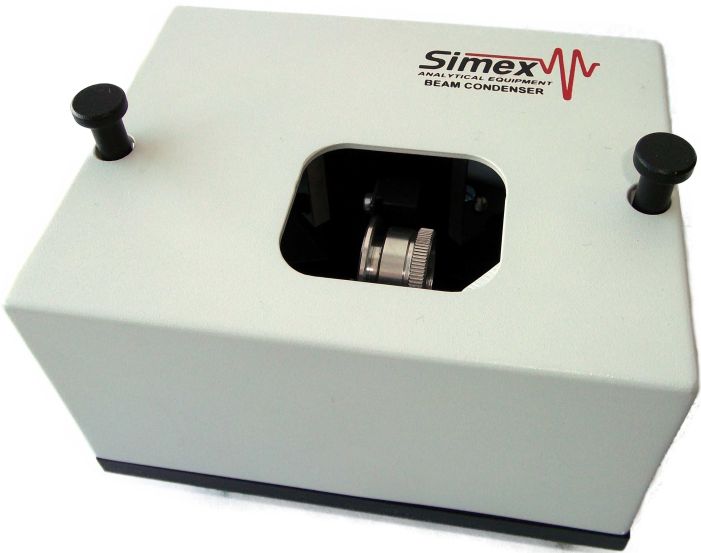
Focusing prefix MKF
It is used in the study of samples compressed into small-diameter tablets with KBr (the method is convenient for spectral analysis of powdery substances - the prefix allows you to work with small amounts of the sample using a manual press for the manufacture of tablets).
• The diameter of the focus spot is less than 3 mm
• Parabolic mirror optics are used in the design
• Windows-substrates can be placed in the prefix after pasty, liquid substances or extracts are applied to them, followed by drying of the layers
• Limited use – in the study of whole samples with dimensions less than 5 mm (preferably using a vertical-type microfocusing attachment)
SIMEKS
Novosibirsk
Produced in: Novosibirsk
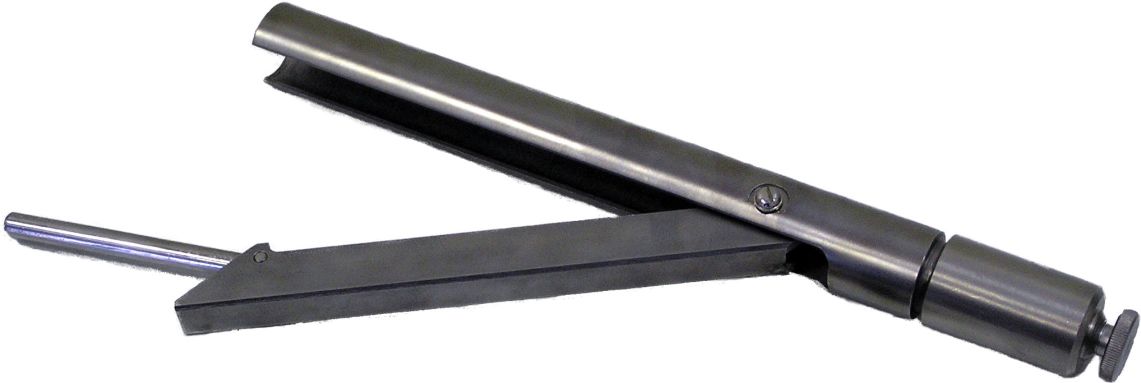
Manual mechanical press
Designed for the preparation of samples in the form of compressed tablets with a diameter of 3.5 mm, consisting of the test substance in a mixture with microcrystalline potassium bromide (KBr).
- the principle of operation of the device is based on creating the pressure necessary for pressing due to a mechanical lever system
- the press is made of high-quality alloy hardened steel
- for the manufacture of a tablet with a diameter of 3.5 mm, a minimum amount of the test substance and KBr is required
- for the study of finished samples on a Fourier spectrometer, a vertical or horizontal microfocusing prefix is used
SIMEKS
Novosibirsk
Produced in: Novosibirsk
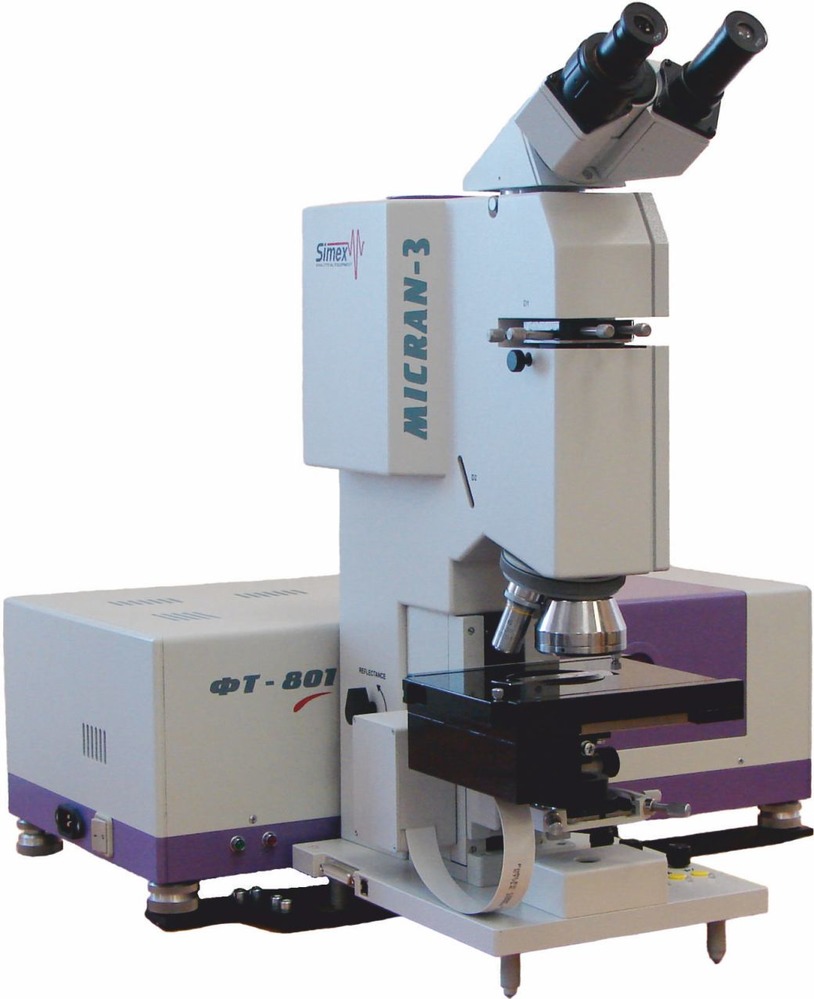
IR microscope "MIKRAN-3"
A higher–level device with extreme sensitivity and an additional set of functions that allow you to expand the possibilities for conducting spectral studies:
· revolver mechanism with 4 interchangeable lenses - mirror IR 15X, NPVO, lens 4X, lens 10X;
· registration of spectra in the modes of specular and diffuse reflection, transmission and NIP;
· increased sensitivity, which allows recording the spectra of micro-objects with sizes from 5 microns;
· built-in control panel with advanced functions;
· automated mapping system;
· the rectangular slit diaphragm is made of special glass – after the fragment is selected, the rest of the field of view is also available to the user, which greatly simplifies photometry of extended surfaces with local inhomogeneities;
· specialized software for controlling the microscope and processing the results.
Liquid nitrogen is required to work with an IR microscope.
SIMEKS
Novosibirsk
Produced in: Novosibirsk
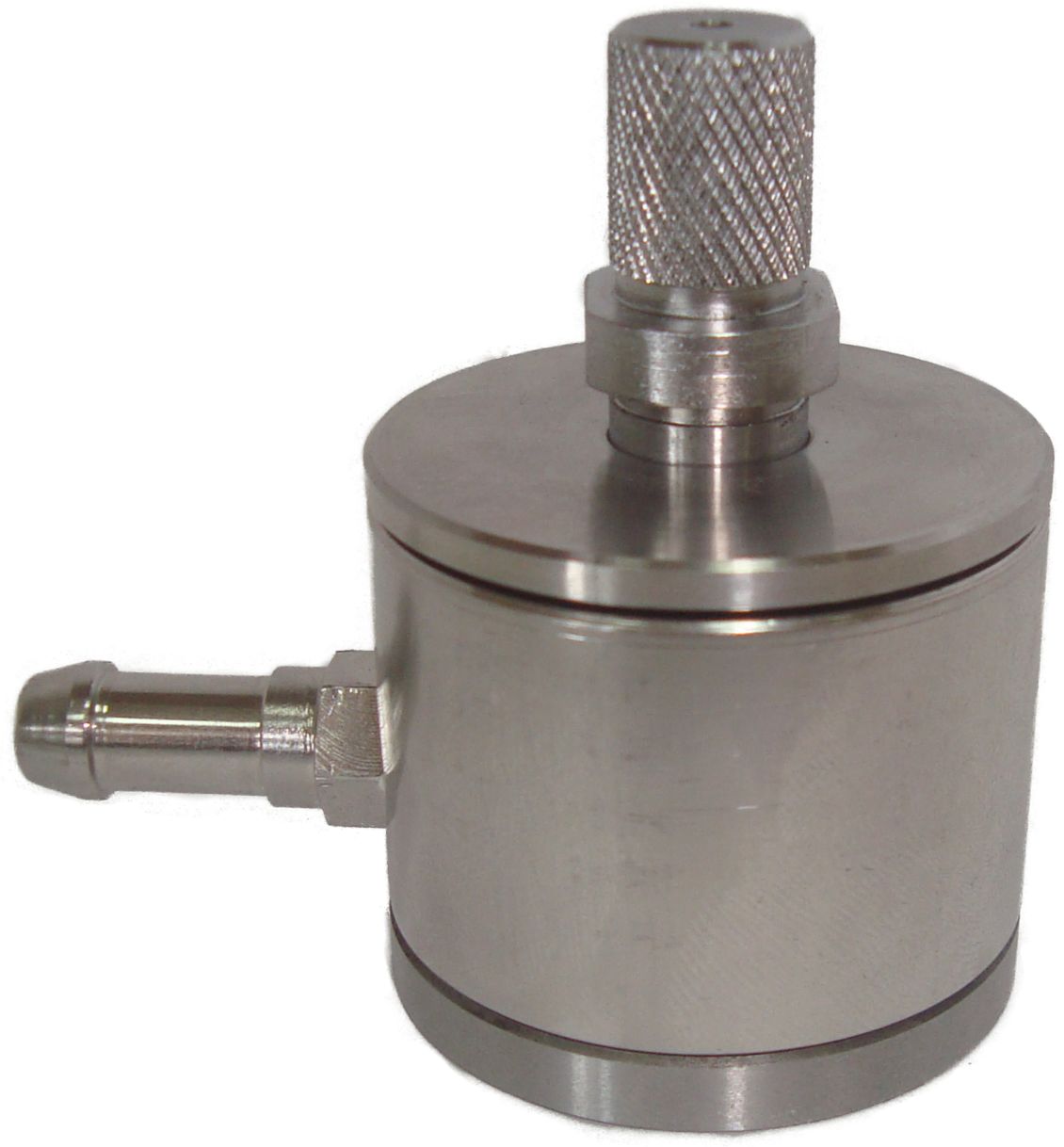
Mold for the manufacture of tablets with KBr diameter of 13 mm
It is intended for the preparation of samples in the form of compressed tablets consisting of the test substance in a mixture with microcrystalline potassium bromide (KBr). The mold is used in combination with the hydraulic press GP 200-13.
- the mold is made of high-quality alloy hardened steel
- to obtain better compressed tablets with KBr, the mold can be pumped out using a pre-vacuum pump. The customer can purchase the pump independently, or order it from the NPF “SIMEX”. Pumping out the mold is not necessary for most studies.
- the kit includes a special dispenser for placing the optimal amount of the pressed mixture in the mold
- to install the finished samples in the spectrometer, a holder of KBr tablets and D13mm substrate windows is used
SIMEKS
Novosibirsk
Produced in: Novosibirsk
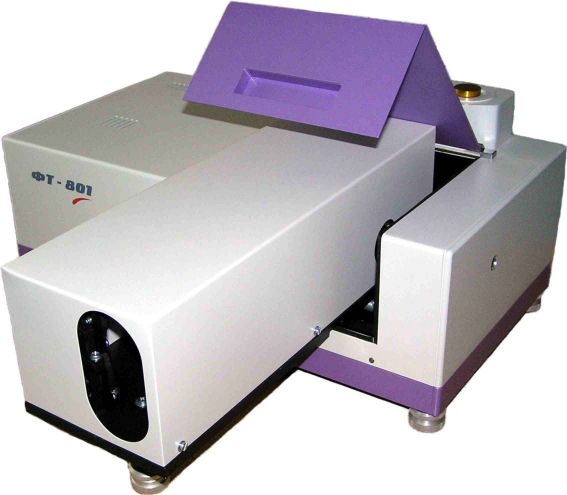
Optical system for recording spectra of substances located in remote closed volumes
Designed for monitoring processes in reactors, vacuum chambers, gas pipelines, etc.
SIMEKS
Novosibirsk
Produced in: Novosibirsk

Reflection prefix PO-45 V
It is intended for express analysis of various types of solid opaque samples, including polymer films and fragments, paint coatings, finished dosage forms in the form of tablets, optical parts and semiconductor materials.
• The sample is located on the subject plane of the investigated surface downwards, the angle of incidence of the central beam on the sample is 45 °
• The diameter of the focus spot is 3 mm
• Allows you to explore objects of any shape and size
• When using a mini-press, it allows you to examine samples in the form of a thin layer rolled out on a mirror plate made of alloy steel (radiation passes through the substance layer twice, reflecting from the mirror surface)
• Not used: for the study of bulk and liquid substances
SIMEKS
Novosibirsk
Produced in: Novosibirsk
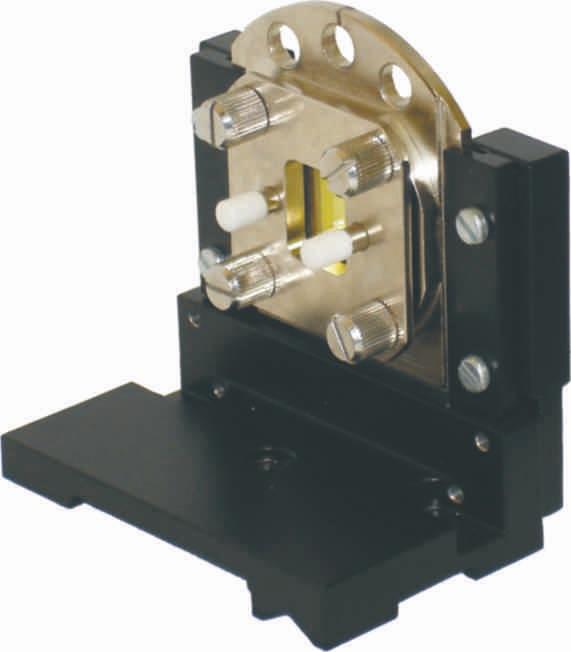
Liquid collapsible cuvettes
They are used for the study of liquids, including solutions with low concentrations
• Have a collapsible design that allows you to use the supplied gaskets of different thicknesses
• Window material – ZnSe (it is possible to order windows from SiO2 and KBr)
• Gasket material – Teflon (fluoroplast)
• Thickness of gaskets – 0.022 mm, 0.1 mm, etc.
SIMEKS
Novosibirsk
Produced in: Novosibirsk
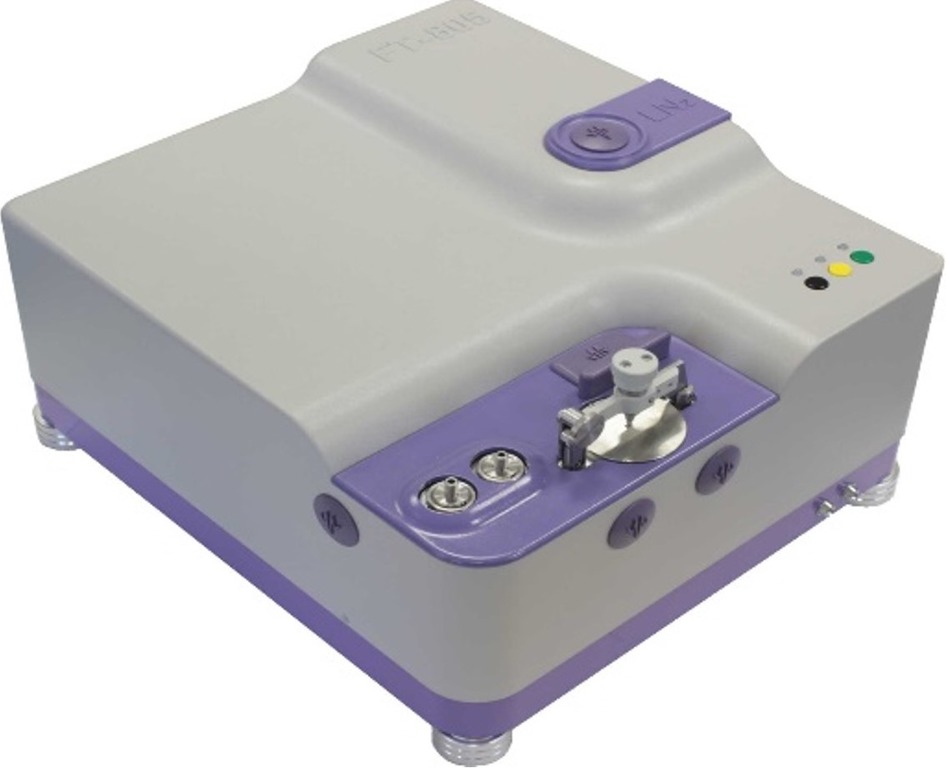
FT-805 IR Fourier spectrometer
A small-sized IR Fourier spectrometer with integrated set-top boxes and two detectors, including a highly sensitive cooled MST. Operating modes: transmission and reflection, NIP, measurements using fiber-optic probes (possible versions with one or two pairs of built-in connectors). It is possible to connect an IR microscope, a telescope to register the spectra of external radiation. The spectrometer can be used as a portable one, and is used, among other things, for express monitoring of technological processes, quality control of liquids in tanks and pipelines, during in-line analyses of biological objects, remote gas analysis.
The installation is designed to create high-quality images on various materials and provides the production of rubber cliche seals and stamps with a resolution of at least 1800 dpi.
Description
It was created on the basis of the innovative Shtrik platform, which is based on a unique control system, the hardware and software of which are entirely developed by specialists of our company.
The installation is designed to create high-quality images on materials such as rubber, metal, plastic and provides the production of cliche seals and stamps with a resolution of at least 1800 dpi.
The fiber laser used in the installation in combination with a system of galvanometric scanners ensures high quality engraving in static mode, does not require water cooling and special maintenance.
When assembling the system, only tested and certified parts are used, which guarantees an especially long service life without additional investments.
Features:
A two-coordinate high-precision positioning system for samples, with the help of which the object table is moved along the X, Y axes. As a result of the positioning system and sequential engraving of image fragments, it is possible to process with high accuracy workpieces with dimensions up to 200 × 300 mm in automatic mode according to the processing program set by the operator;
The algorithm of automatic layer-by-layer engraving using a high-precision mechanism for moving the scanning head along the Z-coordinate allows you to form highly detailed 3D images up to 5 mm deep in metal workpieces (steel, brass, aluminum, titanium, etc.);
A long process of layer-by-layer engraving of deep 3D images (possibly tens of hours) is provided without operator involvement thanks to an automatic algorithm;
The installation is equipped with a built-in system for removing combustion products from the laser radiation exposure zone, as a result of which, the absence of odors and protection of the scanning lens from the products of production is ensured, which is especially important when engraving rubber and plastics;
The installation body completely covers the processing and propagation zones of laser radiation, and the engraving is performed according to the program set by the operator in automatic mode with the installation covers closed. This design of the installation allows it to be attributed to laser devices of hazard class 1.
SIMEKS
Novosibirsk
Produced in: Novosibirsk
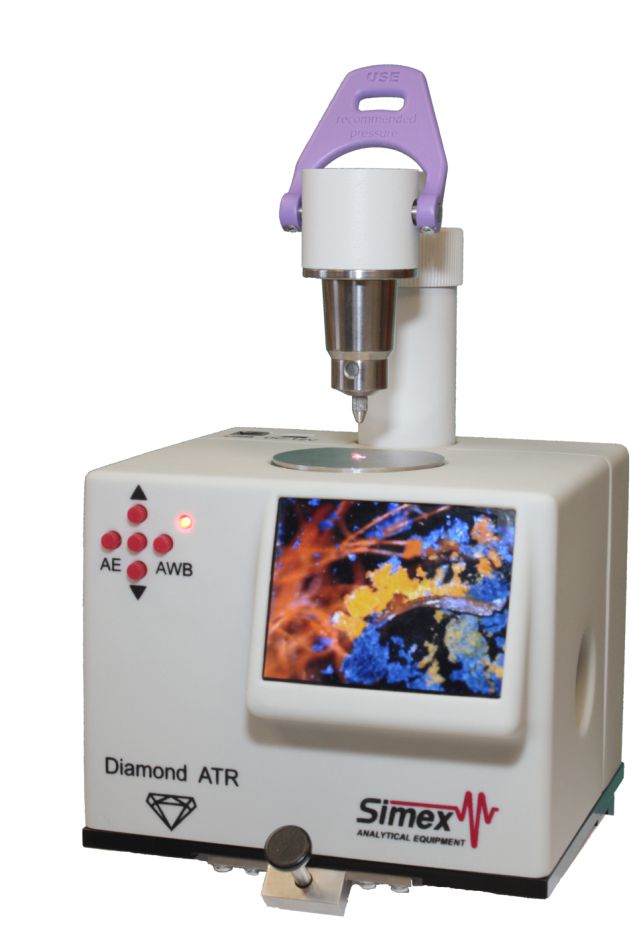
Universal set-top box of NPVO and ZDO with a diamond element and a built-in mini-monitor
It is designed for measurement by the method of disturbed total internal reflection with simultaneous visualization of a micro-object on an integrated and external monitor, as well as by the method of mirror-diffuse reflection with an angle of incidence of 45o at the upper location of the sample.
The prefix in the mode of a single NIP is used to register absorption spectra:
liquids of any degree of viscosity (solutions, suspensions, oils, etc.), including those with high chemical activity;
solid objects of arbitrary shape, including samples with very high hardness (any polymers, fragments of paint coatings, etc.);
powdery substances, including powders with very high hardness (drugs, pharmaceuticals, explosives, inorganic compounds);
samples in the form of thin tapes;
samples in the form of fibers.
The maximum hardness and chemical resistance of the diamond significantly expand the possibilities of the method; there is no need for periodic replacement of the crystal.
The set-top box allows you to register spectra without time–consuming sample preparation, and the presence of a visual inspection system of the studied surface with a high-quality video camera and a built-in high-definition mini-monitor increases efficiency when working with small samples - fragments of thin fibers, microparticles, etc. The built-in monitor has the functions of digital 10X zoom, inverting, etc. The image can be simultaneously displayed on the computer screen (using a USB interface) and then saved as a file.
The removable flange provides a quick and convenient sample change and cleaning of the crystal surface. The design with a diamond element protruding above the base plane of the NPVO allows you to study samples with sufficiently large overall dimensions.
The high quality and repeatability of the results is achieved due to the absence of the influence of the thickness of the substance layer on the shape of the spectrum and the intensity of the absorption bands.
The sample retains its original physicochemical properties and, if necessary, can be further investigated by other methods.
The universal attachment clamp is equipped with a precision lever mechanism for quickly lowering the tip and a micrometer screw that allows you to pre–set the optimal degree of pressure - this ensures quick sample change and repeatability of the results during measurements. For convenience when working with liquid and paste-like samples, as well as in the ZDO mode, it is possible to rotate the clamping console by 180o. The console is equipped with two replaceable tips – with a spherical working part and with a flat hinged head. The high hardness of the diamond allows the use of large clamping forces, which is the determining factor for obtaining high-quality spectra. A replacement table is used to register the specular and diffuse reflection spectra. The sample is located on the subject plane of the investigated surface downwards. The method is used to determine the spectral characteristics of optical parts, thin tapes on the surface, crystals, and other large solid objects of arbitrary shape and size.
SIMEKS
Novosibirsk
Produced in: Novosibirsk
